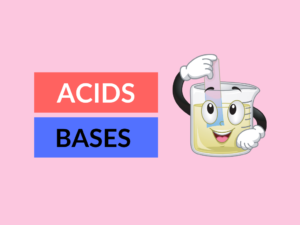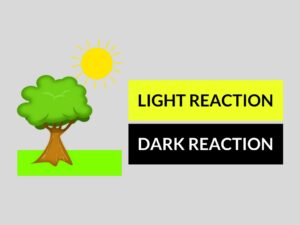Endpoint vs Equivalence Point: Understanding the Differences
Have you ever wondered about the difference between an endpoint and an equivalence point? These terms are frequently used in chemistry, particularly in acid-base titrations. While they may sound similar, they actually represent distinct concepts with different implications. In this article, we will delve into the definitions, examples, and uses of endpoint and equivalence point, highlighting their contrasting features. So, let’s dive in!
What is an Endpoint?
An endpoint refers to the exact point in a titration where the indicator changes its color, signifying the completion of a reaction. It quantitatively represents the amount of reagent needed to reach the endpoint and indicates the specific volume at which the analyte is completely neutralized. Endpoints are often determined by observing a visible change, such as a color change, turbidity, or formation of precipitate, providing invaluable information about the completion of the chemical reaction.
Examples of Endpoint
To better understand endpoints, consider a simple acid-base titration using phenolphthalein as the indicator. As hydrochloric acid is added to sodium hydroxide, the solution’s color changes from pink to colorless at the endpoint. Similarly, in the iodine clock reaction, the solution abruptly turns blue-black, indicating the endpoint and allowing precise measurement of the reaction’s progress.
Uses of Endpoint
Endpoints play a crucial role in various scientific applications. They are extensively used in analytical chemistry for titrations, allowing accurate measurements of the concentration of unknown substances. Apart from acid-base reactions, endpoints also offer valuable information in redox reactions, complexometric titrations, and many other chemical analyses.
What is an Equivalence Point?
An equivalence point denotes the theoretical point in a chemical reaction where the reactants are stoichiometrically equivalent. At this point, the molar amount of titrant added is exactly equal to the molar amount of reactant initially present, resulting in complete neutralization or reaction completion. Equivalence points are determined by precise calculations and do not necessarily correlate with visible changes in indicators or physical properties.
Examples of Equivalence Point
Consider a strong acid-strong base titration of hydrochloric acid and sodium hydroxide. The equivalence point occurs when the moles of hydrochloric acid equal the moles of sodium hydroxide, leading to neutralization and the formation of salt and water. In the reaction between sodium hydroxide and acetic acid, the equivalence point corresponds to the generation of sodium acetate and water, signifying complete neutralization.
Uses of Equivalence Point
Equivalence points find significant applications in stoichiometry and determination of unknown concentrations. By calculating the amount of titrant needed to reach the equivalence point, scientists can deduce the precise concentration of the analyte. Equivalence points are also essential for determining molecular formulas, acid dissociation constants, complex formation constants, and many more analytical determinations.
Differences Between Endpoint and Equivalence Point
| Difference Area | Endpoint | Equivalence Point |
|---|---|---|
| Definition | The point of visible change in a titration | Theoretical point of reaction completion |
| Measurement | Measured by observation | Determined by precise calculations |
| Visible Change | Indicates endpoint | Does not consistently indicate equivalence point |
| Accuracy | May vary based on perception | Precise and calculated |
| Application | Used in titrations | Used in stoichiometry and qualitative analysis |
| Observation | Observable by changes in color, turbidity, or precipitate | Not always visibly detectable |
| Indicator Reliance | Dependent on indicator behavior | Not reliant on indicator properties |
| Quantification | Can quantitatively determine analyte volume at endpoint | Allows precise calculation of analyte’s concentration |
| Physical Change | Associated with visible physical changes | May not involve significant physical property alterations |
| Concept | Focuses on observable properties | Addresses chemical equivalence and stoichiometry |
Conclusion
In summary, an endpoint represents the observable change in a titration, whereas an equivalence point designates the theoretical point of reaction completion. Endpoints rely on visible indicators, while equivalence points are determined through precise calculations. Endpoints are useful for qualitative analyses, while equivalence points find applications in quantitative and stoichiometric determinations.
Knowledge Check: Test Your Understanding
- What is the main difference between an endpoint and an equivalence point?
a) Theoretical vs. visible change
b) Indication by indicator vs. precise calculation
c) Quantitative vs. qualitative analysis
d) All of the above
Answer: d) All of the above - Which factor determines an endpoint?
a) Precise calculations
b) Visible change
c) Stoichiometric equivalence
d) None of the above
Answer: b) Visible change - What is the primary application of equivalence points?
a) Determining unknown concentrations
b) Stoichiometry
c) Qualitative analysis
d) Colorimetry
Answer: b) Stoichiometry - Which type of indicator is relied upon for determining equivalence points?
a) Color indicators
b) pH indicators
c) No indicators are necessary
d) Non-visible indicators
Answer: c) No indicators are necessary - How are endpoints useful in analytical chemistry?
a) They indicate the theoretical point of reaction completion
b) They allow for qualitative analyses
c) They provide precise calculations
d) They facilitate measurement of unknown concentrations
Answer: b) They allow for qualitative analyses - Which type of reaction requires precise calculations to determine the equivalence point?
a) Acid-base titrations
b) Complexometric titrations
c) Redox reactions
d) All of the above
Answer: d) All of the above - What does the equivalence point indicate?
a) The visible change in the solution
b) The volume of analyte needed for neutralization
c) The molar equivalence of reactants
d) None of the above
Answer: c) The molar equivalence of reactants - What property alteration may not be associated with an equivalence point?
a) Change in color
b) Formation of precipitate
c) Drastic temperature change
d) No physical property alterations occur
Answer: d) No physical property alterations occur - Which reaction involves the formation of salt and water at the equivalence point?
a) Sodium hydroxide and acetic acid
b) Hydrochloric acid and sulfuric acid
c) Nitric acid and sodium hydroxide
d) All of the above
Answer: c) Nitric acid and sodium hydroxide - What do endpoints allow scientists to measure?
a) The concentration of the analyte
b) The exact amount of reactant used
c) The color change of the solution
d) Only the titrant added to the solution
Answer: a) The concentration of the analyte



